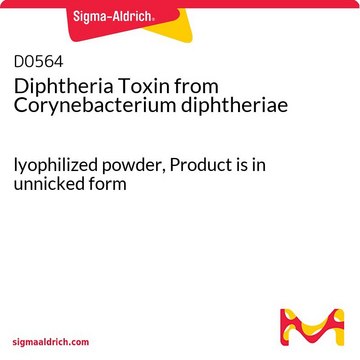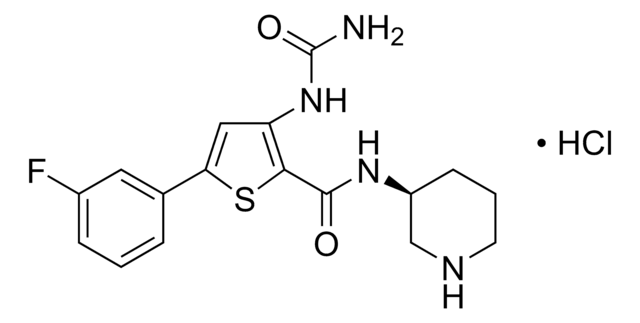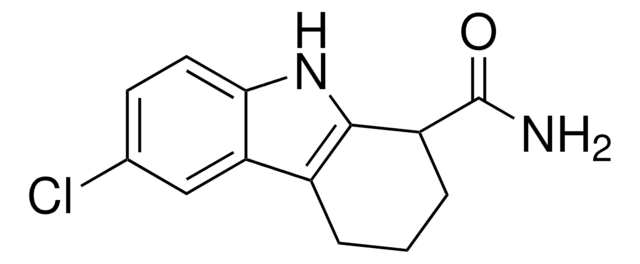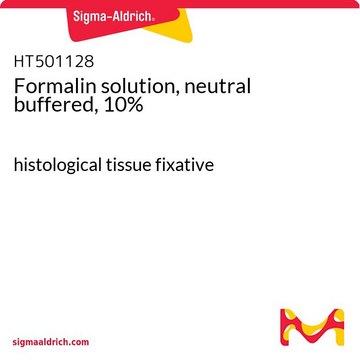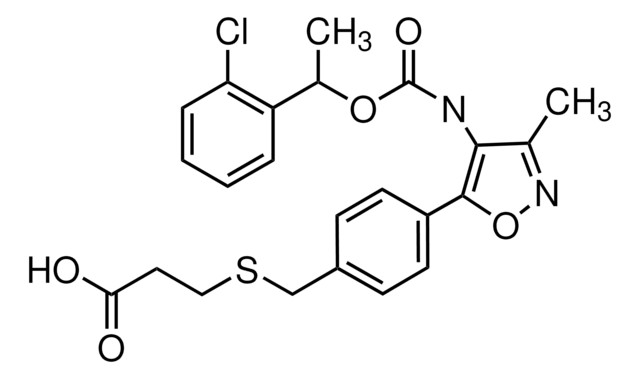General description
Diphtheria Toxin, Unnicked, from Corynebacterium diphtheriae catalyzes ADP-ribosylation of eukaryotic aminoacyltransferase II (EF2) using NAD as substrate, thereby inhibiting protein synthesis. May also induce inter-nucleosomal breakdown. Causes DNA fragmentation and cytolysis in U937 cells. Activation requires nicking with a protease followed by reduction with DTT. Diphtheria toxin, synthesized and excreted as a proenzyme, is composed of a single polypeptide chain of 63 kDa. For its enzymatic activity to be expressed, the toxin must undergo two covalent alterations in structure. First, a mild proteolysis results in the formation of an enzymatically inactive "nicked toxin," which consists of two major fragments (A and B) linked by a disulfide bond. Reduction of the nicked toxin with thiols (DTT) releases the enzymatically active N-terminal A fragment (24 kDa). The C-terminal B fragment (39 kDa) has no apparent enzymatic activity. The B fragment is required for toxicity and is responsible for recognizing and binding of the toxin to cell surface receptors.
Application
Diphtheria Toxin, Unnicked, Corynebacterium diphtheriae has been used for intraperitoneal administration in mice for cell ablation.
Biochem/physiol Actions
Cell permeable: no
Note: Toxicity may vary by lot of toxin. Each laboratory should determine the optimum dosage for each particular application.
Primary Target
Eukaryotic aminoacyltransferase II (EF2)
Product does not compete with ATP.
Reversible: no
Warning
Toxicity: Harmful (C)
Physical form
Lyophilized from sterile 10 mM Tris, 1 mM EDTA, pH 7.5.
Reconstitution
Following reconstitution, aliquot, quickly freeze on dry ice, and freeze (-70°C). Subsequent thawing should be carried out only at room temperature. For assays employing very low concentrations of diphtheria toxin, the use of a carrier protein, such as BSA or HSA, is recommended.
Please see vial label for lot-specific reconstitution volume.
Analysis Note
Major band (under reducing conditions) of ~63 kDa
Other Notes
Diphtheria toxin is purified from Corynebacterium diphtheriae Park Williams strain 8 by a modified method of Pappenheimer, et al. As assessed by disc electrophoresis run at alkaline pH under non-denaturing conditions, this preparation migrates as a major band at 63 kDa, corresponding to the intact toxin. Two faster, more lightly stained bands (24 and 39 kDa), corresponding to A and B fragments, may be observed. Following trypsin treatment in DTT, diphtheria toxin exhibits high activity when assayed for its ability to ADP-ribosylate EF2. The ED50 for CHO cells is determined to be about 0.4 ng/ml.
Diphtheria toxin is purified from Corynebacterium diphtheriae Park Williams strain 8 by a modified method of Pappenheimer, et al. As assessed by disc electrophoresis run at alkaline pH under non-denaturing conditions, this preparation migrates as a major band at 63 kDa, corresponding to the intact toxin. Two faster, more lightly stained bands (24 and 39 kDa), corresponding to A and B fragments, may be observed. Following trypsin treatment in DTT, diphtheria toxin exhibits high activity when assayed for its ability to ADP-ribosylate EF2. The ED50 for CHO cells is determined to be about 0.4 ng/ml.
Legal Information
CALBIOCHEM is a registered trademark of Merck KGaA, Darmstadt, Germany
